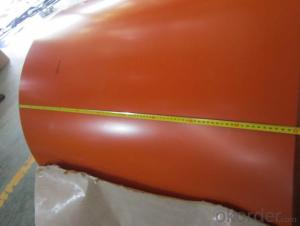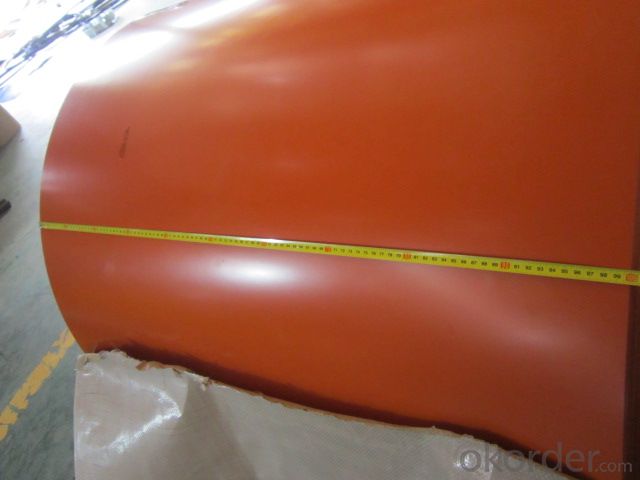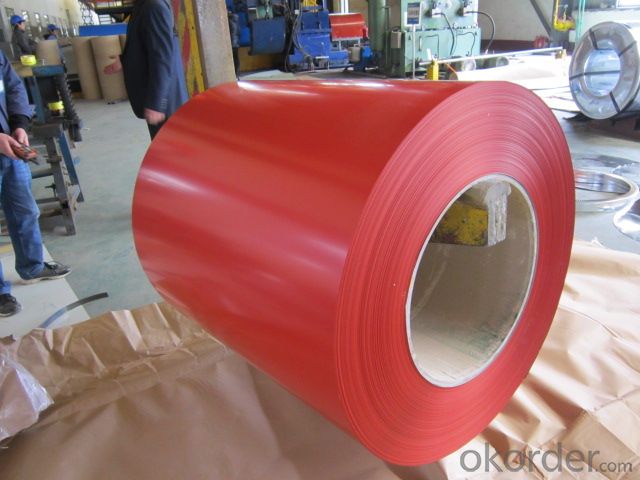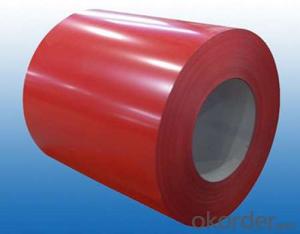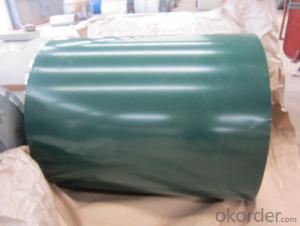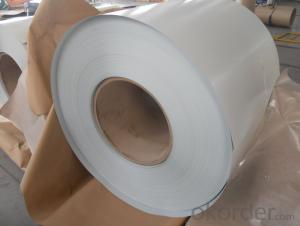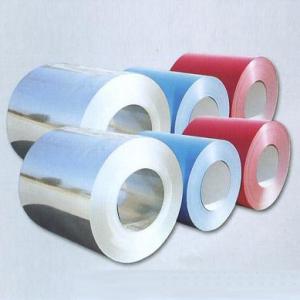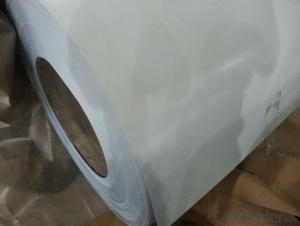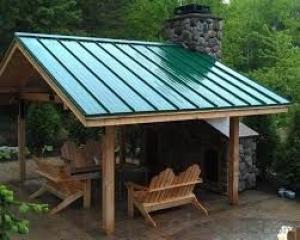PRE-PAINTED GALVANIZED STEEL IN COILS
- Loading Port:
- Tianjin
- Payment Terms:
- TT OR LC
- Min Order Qty:
- 50 m.t.
- Supply Capability:
- 5000 m.t./month
OKorder Service Pledge
OKorder Financial Service
You Might Also Like
PRE-PAINTED STEEL IN COILS
ZINC COATING:G40
TOP COATING:5 MIC EPOXY+20 MIC PE, PROTECTION FILM
BACK COATING: 7 MIC EPOXY GREY
WEIGHT PER COIL:2-3 TONS COLOUR: RAL 9010 PURE WHITE
STANDARD:JIS G3312,CGCC
Package:seaorthy standard export
Applications:conditioning, micro-wave oven, bread maker,solar water heater,condencing apparatus,Blackboard, white board,chalkboard, hidden cell blackboard,bulletin board,Central heating slice, lampshade, chifforobe, desk, bed, locker, bookshelf,garbage can, billboard, typewriter, instrument panel, weight sensor, photographic equipment,coffin, fence, Prepainted Galvanized Steel Coil
Electrical appliance:Refrigerator, washer, switch cabinet, instrument cabinet, air
Inside:doo,doorcase,light steel roof structure,vent gutter,etc
Electial Appliance:refrigetator.washer,switch cabinet,etc
Furniture:central heating slice,lampshade,etc
Other :clapboard,container, writing panel,garbage can,timekeeper,etc
- Q: What are the different types of steel coil cutting methods?
- There are several methods used for cutting steel coils, including shearing, slitting, and laser cutting. Shearing involves using sharp blades to cut through the coil, while slitting utilizes circular blades that make multiple cuts to create narrower strips. Laser cutting, on the other hand, employs a focused laser beam to melt or vaporize the steel, resulting in precise and clean cuts.
- Q: What metals contain steel? It can be anything except soft iron or steel.
- Metals do not contain steel. Steel is an alloy of purified iron and carbon, and sometimes with other metals, such as nickel, chromium, or molybdenum to make it stainless or to change its hardness or other properties. It's like asking what cereals contain Cheerios. It doesn't really make sense. Other metal alloys contain iron, which is an element and the main ingredient of steel. Maybe you should be asking which metal alloys contain iron? That's more like asking which cereals contain whole grain oats. Now that's a question that can be answered by reading the ingredients labels on your standard boxes of metal alloys :-)
- Q: I saw an amazing flamenco player, however i have a steel string guitar, where he had a nylon stringed one. So i was wndering if its possible to play flamenco songs on the steel string guitar, and where could i find a tab for it? are there tabs for rasegueados?
- I routinely play Flamenco on a steel-string acoustic as I dislike playing my two classicals because of the neck size and tuning problems. I prefer keeping my calluses toughened sufficiently and I do that on my HD-35 Martin and sometimes on my J45/50 Gibson. So enjoy all genres of music on your steel stringed guitar.
- Q: What are the different methods of coil welding for steel coils?
- There are several different methods of coil welding for steel coils, including resistance welding, laser welding, and induction welding. Resistance welding involves applying pressure and passing an electrical current through the coils to create a weld. Laser welding utilizes a high-powered laser beam to melt and fuse the edges of the coils together. Induction welding involves using electromagnetic fields to heat and fuse the coils. Each method has its own advantages and is chosen based on the specific requirements of the application.
- Q: How are steel coils used in the production of oil and gas pipelines?
- Steel coils are used in the production of oil and gas pipelines as they are formed into pipes and provide the necessary strength and durability required for transporting these resources over long distances. The coils are uncoiled and then shaped into pipes through a process called pipe forming or rolling, which allows for the creation of seamless or welded pipes depending on the specific requirements. These pipes are then further processed, such as being welded together, coated, or threaded, to ensure their suitability for the transmission of oil and gas. Overall, steel coils play a crucial role in the manufacturing of pipelines by providing the necessary raw material for their construction.
- Q: What are the dimensions of steel coils used in the industrial machinery industry?
- The dimensions of steel coils used in the industrial machinery industry can vary depending on the specific application and requirements. However, common dimensions for steel coils used in this industry range from 0.15 to 3.5 mm in thickness and 600 to 2,000 mm in width. The inner diameter of the coil typically ranges from 508 to 762 mm. It is important to note that these dimensions can vary based on the specific needs of the machinery and the manufacturer.
- Q: Why is the selection of steel building erector of extreme importance while starting a new steel building project?
- Because if the beaming is screwed up, everything in the building is at risk. Also, if the erector runs late, everything else is delayed. An incompetent erector can actually cause damage to the beams [especially if inadequate bracing leads to collapse] and getting new ones can severely delay the project.
- Q: Galvanized Steel or Standard Steel. This will be for the grilling surface.
- Bare steel. Galvanized or ANY coated racks will produce deadly chemicals in the food when heated. Galvanizing is a tin coating applied to the surface of the iron. Cadmium is a deadly chemical when ingested and is one of the chemicals on refrigerator racks. I'm not sure about Stainless Steel. The safest way is if in doubt DON'T.
- Q: LIke a steel building conversion into a residental building??? Thanks.
- Right here. Steel Homes, Steel House, Steel Buildings, Steel Home Plans, ... Steel Homes, Steel House, Steel Buildings, Steel Home Plans, Steel Houses, ... Steel Homes and Buildings · Steel Office Buildings and Construction sites ... www.karmod.eu/steel-structures - 18k - Similar pages www.karmod.eu/steel-structures steel buildings metal buildings modular homes steel building ... ... log homes photographs, log homes construction, sales agents, log homes financing, ... Easy online pricing
- Q: My teacher says if they were that they would still be standing today. I'm not sure if he means the reinforced steel in the concrete beams, columns etc or if the whole beams and columns floor etc were were made of reinforced steel.
- There is no way you could make a 110 floor building out of concrete.
Send your message to us
PRE-PAINTED GALVANIZED STEEL IN COILS
- Loading Port:
- Tianjin
- Payment Terms:
- TT OR LC
- Min Order Qty:
- 50 m.t.
- Supply Capability:
- 5000 m.t./month
OKorder Service Pledge
OKorder Financial Service
Similar products
Hot products
Hot Searches
Related keywords
